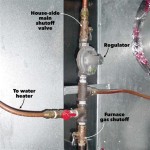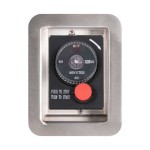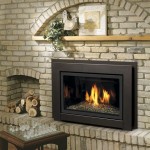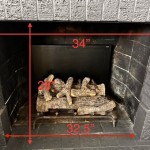How To Clean a Brick Fireplace Effectively With TSP
A brick fireplace serves as a focal point in many homes, offering warmth and aesthetic appeal. However, the accumulation of soot, ash, and grime can detract from its beauty and even pose potential health hazards. Regular cleaning is essential to maintain the fireplace's appearance and ensure safe operation. Trisodium phosphate (TSP) is a powerful cleaning agent often employed to remove stubborn stains and buildup from brick surfaces. This article provides a comprehensive guide on how to clean a brick fireplace effectively using TSP, outlining the necessary steps, safety precautions, and alternative cleaning methods.
Before embarking on the cleaning process, it's crucial to understand the properties of TSP and its potential effects. TSP is a strong alkaline compound that effectively cuts through grease, grime, and soot. However, it can also be harsh on certain materials and poses risks if handled improperly. Therefore, careful preparation and adherence to safety guidelines are paramount.
Gathering Necessary Supplies and Preparing the Workspace
The first step involves assembling all the necessary supplies. These include:
- Trisodium phosphate (TSP)
- Warm water
- Two buckets
- Stiff-bristled scrub brush
- Sponge
- Rubber gloves
- Eye protection (goggles or safety glasses)
- Drop cloths or plastic sheeting
- Spray bottle (optional)
- Dust mask (optional, but recommended)
Once the supplies are gathered, prepare the workspace by covering the surrounding floor and furniture with drop cloths or plastic sheeting. This will protect against spills and splatters during the cleaning process. Ensure adequate ventilation by opening windows and doors to minimize the inhalation of TSP fumes. Wearing rubber gloves and eye protection is mandatory to prevent skin and eye irritation. A dust mask can also be worn to further minimize inhalation of dust particles and TSP powder.
Before applying the TSP solution to the entire fireplace, it is advisable to test it on an inconspicuous area first. This will help determine if the TSP solution will damage or discolor the brick. Choose a small, hidden area, such as behind the firebox or in a corner. Apply a small amount of the TSP solution, let it sit for a few minutes, and then wipe it off. Observe the area for any adverse reactions. If no damage is observed, proceed with cleaning the rest of the fireplace.
Properly preparing the TSP solution is essential for its effectiveness and safety. The recommended concentration is typically one-half cup of TSP per two gallons of warm water. Always add the TSP to the water, not the other way around, to prevent clumping and splashing. Stir the solution thoroughly until the TSP is completely dissolved. Avoid using excessively hot water, as it can accelerate the reaction and potentially release harmful fumes. It is also important to consult the manufacturer's instructions on the TSP packaging for specific mixing ratios and safety guidelines.
Applying the TSP Solution and Scrubbing the Brick
After preparing the workspace and the TSP solution, the next step involves applying the solution to the brick fireplace. There are several methods for applying the TSP solution. One option is to use a sponge or cloth to apply the solution to the brick surface. Another option is to use a spray bottle to evenly distribute the solution. Work in small sections, ensuring that the brick is thoroughly saturated with the solution. Allow the TSP solution to dwell on the brick surface for several minutes, typically 10-15 minutes, to allow it to penetrate and loosen the dirt and grime. Avoid allowing the solution to dry on the brick, as this can leave a residue that is difficult to remove.
Once the TSP solution has dwelled on the brick surface for the recommended time, it's time to begin scrubbing. Use a stiff-bristled scrub brush to vigorously scrub the brick, paying particular attention to areas with heavy soot or grime buildup. Apply firm and consistent pressure to remove the stubborn stains. For deeply embedded stains, consider using a smaller brush or a toothbrush to reach into crevices and corners. Rinse the brush frequently with clean water to remove the dislodged dirt and grime.
Continue scrubbing the entire fireplace, working in small sections at a time. As you scrub, you will likely notice the TSP solution turning dark as it dissolves the soot and grime. This is a good indication that the solution is working effectively. Be patient and persistent, as it may take some time and effort to remove all the stains. If necessary, reapply the TSP solution to particularly stubborn areas and allow it to dwell for a longer period before scrubbing.
After scrubbing the entire fireplace, it is crucial to thoroughly rinse the brick surface with clean water. This will remove any remaining TSP residue and prevent it from drying on the brick. Use a clean sponge and bucket of clean water to rinse the brick thoroughly. Change the water frequently to ensure that you are removing all traces of the TSP solution. It is important to remove all TSP residue, as it can leave a white powdery film on the brick surface if left to dry.
Once the fireplace has been thoroughly rinsed, allow it to air dry completely. This may take several hours or even overnight, depending on the humidity and ventilation. Avoid using heat guns or hair dryers to speed up the drying process, as this can potentially damage the brick. Once the fireplace is completely dry, inspect it for any remaining stains or residue. If necessary, repeat the cleaning process, focusing on the areas that still require attention.
Alternative Cleaning Methods and Safety Considerations
While TSP is an effective cleaning agent, it is not the only option available. Several alternative cleaning methods can be used to clean a brick fireplace, particularly if TSP is not available or if there are concerns about its potential environmental impact. One alternative is to use a mixture of baking soda and water. Baking soda is a mild abrasive that can help remove soot and grime without being too harsh on the brick surface. To use this method, mix baking soda with water to form a paste. Apply the paste to the brick surface, let it sit for a few minutes, and then scrub with a brush. Rinse thoroughly with clean water.
Another alternative is to use a solution of vinegar and water. Vinegar is a natural acid that can help dissolve mineral deposits and grime. To use this method, mix equal parts vinegar and water in a spray bottle. Spray the solution onto the brick surface, let it sit for a few minutes, and then scrub with a brush. Rinse thoroughly with clean water. It is important to note that vinegar can be corrosive to certain materials, so it is advisable to test it on an inconspicuous area first.
Borax, a natural mineral, can also be used as an alternative cleaning agent. It is less harsh than TSP but still effective at removing grime and soot. Mix borax with warm water to create a cleaning solution and apply it to the brick using a sponge or brush. Scrub the surface gently and rinse thoroughly with clean water.
Regardless of the cleaning method used, it is crucial to prioritize safety. Always wear rubber gloves and eye protection to protect your skin and eyes from irritation. Ensure adequate ventilation by opening windows and doors to minimize the inhalation of fumes. When working with TSP or other chemical cleaning agents, follow the manufacturer's instructions carefully and heed all safety warnings. Store cleaning agents in a safe place, out of reach of children and pets. If any cleaning agent comes into contact with your skin or eyes, rinse immediately with plenty of water and seek medical attention if necessary. Proper disposal of cleaning solutions is also essential. Consult local regulations for proper disposal methods. Never pour cleaning solutions down the drain, as this can contaminate the water supply.
Maintaining a clean brick fireplace not only enhances its aesthetic appeal but also contributes to a safer and healthier home environment. Regular cleaning prevents the buildup of soot and grime, which can pose fire hazards and release harmful pollutants into the air. By following the steps outlined in this article and prioritizing safety, one can effectively clean a brick fireplace using TSP or alternative cleaning methods, ensuring its longevity and beauty for years to come.

How To Clean Fireplace Bricks 9 Steps With S Wikihow

How To Clean Fireplace Brick Soot Marks And Grime Hometalk

How To Clean Fireplace Bricks 9 Steps With S Wikihow

How To Clean A Brick Fireplace Before Painting

Before And After Whitewashing The Brick Fireplace Is Easy Peasy Just Clean With Tsp Or Other Br Inserts

How To Clean A Fireplace The Blog At Fireplacemall

Paint A Brick Fireplace The Blog At Fireplacemall

How To Clean Fireplace Bricks Cleanup Team

How To Clean Fireplace Brick Soot Marks And Grime Hometalk

How To Clean A Stone Fireplace
Related Posts








